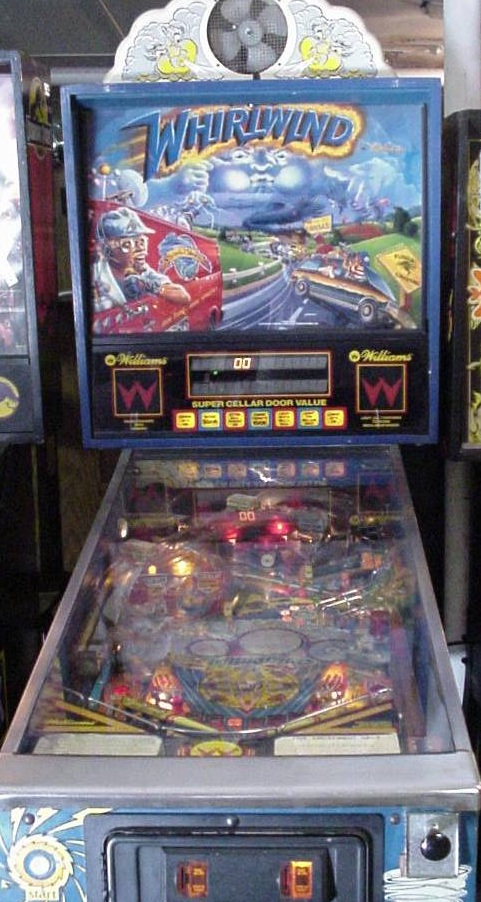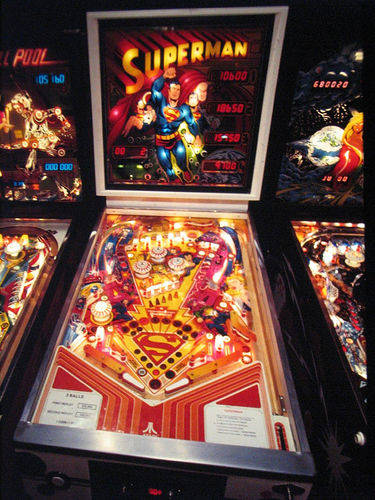Video games are awesome. That's why we're here, isn't it? It's why we're reading all these new articles, press releases and rumor-mill information on games that won't be out for years to come. But I believe there's one form of entertainment that games today owe something to: pinball.
I do believe that pinball is a lost art, and I've meant to write this entry for some time. Back when I first learned about games I was playing, in tandem, any pin I could find: Whirlwind, Superman, and later on World Cup '94 (even though I never got much into socc- I apologize, "futball"). It was the first game I know of that genuinely used real gravity as a mechanic, not as a promotional tool to get people interested but as a primary mechanic.
But for any youngsters out there, let me give some backstory. Pinball, as we know it, likely started in the mid-1700s with games like billiards, croquet, and bagatelle, both early games involving hitting a ball towards a sort of pocket. Pins were used to alter the direction of the ball and led to a level of unpredictability to the game (like modern day Plinko on The Price is Right, also extremely old and awesome).

In 1871, the plunger was invented—patented by Montegue Redgrave, US patent #115,357 in 1871—along with adjustments to the playfield that are known to be the early version of modern-day pinball. With the invention of the electronic flippers a few years after World War II (for reference, play Wolfenstein… and ignore the psych powers) pinball machines started to take off here in the States.
The game itself is simple, almost to a fault, no matter the table layout or theme: use the flippers to keep the ball bouncing around, score a bunch of points, and grab the high score. It's the same mentality that got video games up and running, especially with the creation of Space Invaders (and the first video game high score) back in 1978. Pinball tables range in complexity from early bumper games like Play-Boy in 1932, to the skill-heavy and wide-body Genie in 1979, to video-covered hybrid tables like Star Wars: Episode I in 1999. The simple feel of a challenging, truly interactive game with specific goals and high scores—it was definitely a precursor to the early wave of video games… enough so that early games tried to emulate pinball tables!

I was so happy when I heard that the Pinball: Hall of Fame titles were made. With the death of arcades in the US, it's getting more and more difficult to find working pinball units as often as I'd like. It's not the same—the feel of the table and the gravity of the play isn't all there—but they're a great way to be introduced to a great physics game. We've all learned over our lives that some of the best games we know are the most simple, and pinball is a concentration of that experience in its physical form.
We wouldn't have games today without what filled early arcades and game rooms, so it's time we showed pinball some respect for its place in interactive entertainment. And trust me, for anyone who might not have played, once you put your hands on that table you understand that intangible feeling that makes me yearn for the early days. Viva la pinball!







